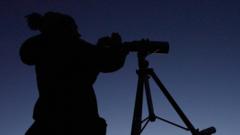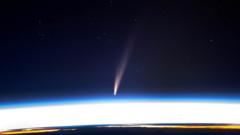In February 1946, a young amateur astronomer named Michael Woodman made an extraordinary observation from his bedroom window in Newport, marking a memorable night in the realm of celestial discoveries. At just 15 years old, he gazed at the constellation of Corona Borealis when he noticed an unusual brightness emanating from one of its stars, T Corona Borealis, or T Cor Bor.
After reporting his observation to the Astronomer Royal, Woodman learned he was the first person in the UK to witness this rare event caused by a star system located approximately 3,000 light-years away. The memory remains vivid for the now 94-year-old, who reflected on the adrenaline and excitement he felt that night, deeming it “hitting the jackpot.”
As T Cor Bor only ignites about every 80 years, this flash in the night sky has attracted the attention of a new generation of astronomers eager to observe it once more. In locations like the Dark Skies Reserve of Bannau Brycheiniog, teams are setting up their telescopes to catch a glimpse of this spectacular occurrence. Dr. Jenifer Millard of Fifth Star Labs explains that T Cor Bor is currently too faint to see without assistance but may soon become visible to the naked eye in the right conditions.
To locate T Cor Bor, stargazers are advised to locate the Plough constellation, use Arcturus as a marker, and then seek the distinctive curved shape of Corona Borealis. While it will only appear for a short period, employing binoculars or a small telescope could extend the viewing time.
This celestial event occurs due to a unique interaction between a white dwarf and a red giant star. The gravity of the dense white dwarf is so tremendous that it siphons material from its larger counterpart, setting the stage for a nuclear explosion. Dr. Jane Clark from the Cardiff Astronomical Society describes this explosion as akin to the shining brilliance of a decorated Christmas tree.
Despite a few previous false alarms in detecting T Cor Bor, astronomers are optimistic this time, with signs suggesting that its brightness has recently begun to dip, potentially signaling an impending eruption. Dr. Chris North from Cardiff University notes that the astronomical community is keen to collect data during this anticipated show, promising deep insights into this unique star system.
As for Michael Woodman, he looks forward to possibly catching T Cor Bor in all its glory one more time. If he succeeds, he would hold the distinction of being the only individual to witness the star’s dazzling display twice. With his characteristic enthusiasm, Woodman expresses his determination, saying, “Got to keep breathing!” as he shares the collective excitement that surrounds this exceptional astronomical event.







